6 full-size alternatives to muscle cars
Plenty of cars from the ’60s and ’70s offer beautiful designs and gutsy power plants but don’t neatly fall into the muscle car category. In the past, we’ve offered up some more affordable, midsize alternatives to the typical muscle car. This time, let’s delve into some of my favorite full-size cars from the era. Sure, they were bigger and heavier than their drag strip–hero counterparts, but they brought some big V-8 power to bear.
These cars were often the premier models in their showrooms. They featured a plusher interior and often prioritized a smoother ride. While their rowdier muscle car brethren featured some of the same power plants in smaller, lighter packages and dominated the drag strip, these cars were built for the highway and are still perfectly suited for weekend cruising or road-trip duty.
Whether totally stock, lightly resto-modded, or fully customized, here are six full-size hardtops that are overdue for some adulation. Translation: When you can find them, these fantastic cars are often a bargain.
1970 Ford Thunderbird
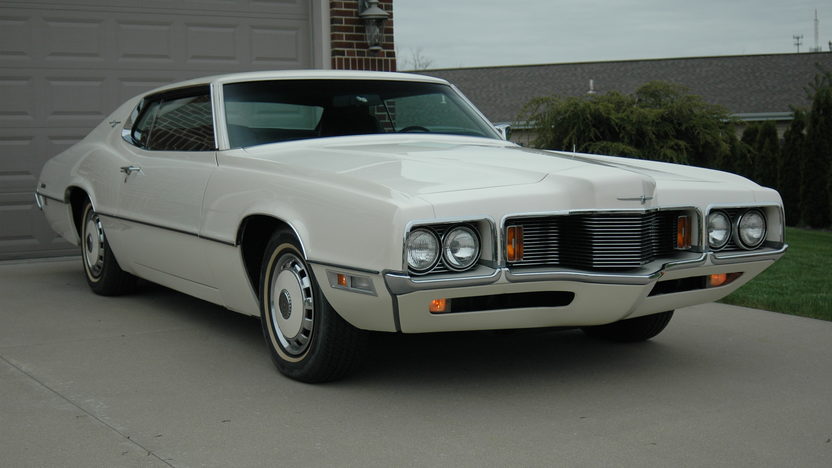
How have these cars flown under the radar for so long? From the front three-quarter view they look long and low, with a jutting grille that resembles the mid-size Mercury Cyclone. However, its rear three-quarter view is among the best of any car built during the decade. The roof is so low it looks chopped, and the taillights frame the car perfectly.
Barrett-Jackson sold a customized 1970 Thunderbird at its 2019 Las Vegas sale—the purple car you see above—that had the front of a 1967 Thunderbird seamlessly grafted on. The hidden headlights were a fantastic addition, but even in stock form they look amazing. The custom version, absolutely regal in metallic purple, went for $55,000. A well-preserved model will cost much less.
Power came from a 360-hp 429-cubic-inch V-8, and while a Boss 429 would be killer, the Thunderbird’s engine bay should be a bit more accommodating of the massive engine than the Mustang’s.
1969–70 Buick Wildcat
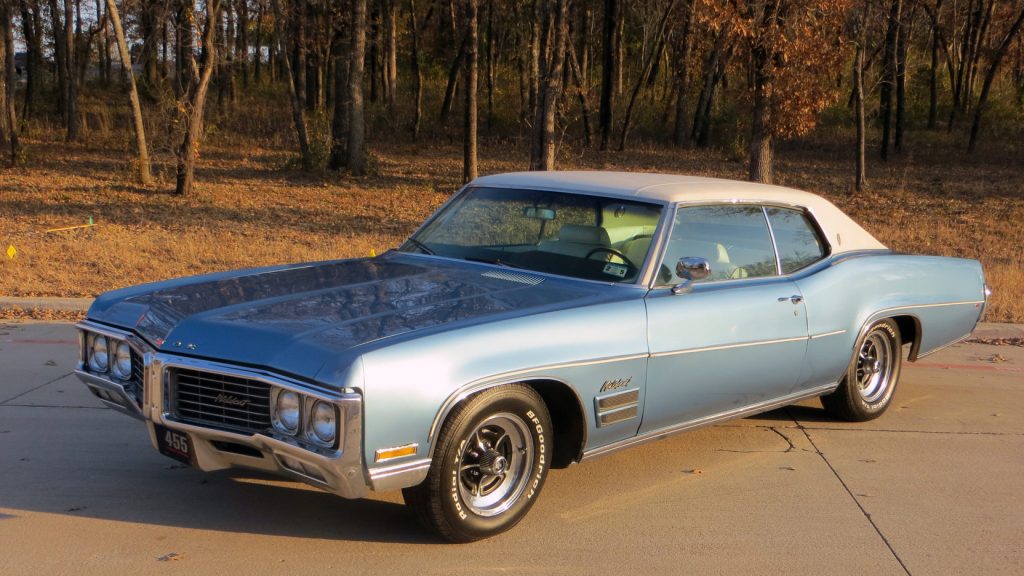
We’ve sung the praises of the Buick Wildcat before, but here’s the chorus one more time: The Wildcat offers up a lot of the performance of the Impala SS, without the premium price that comes with the collectibility of the “SS” badge. It brings fantastic looks, solid big-block power plants, and smooth cruising. The only problem is that they don’t come up for sale as often as their more popular B-body platform mates.
That said, because Wildcats have the benefit of riding on GM’s long-lived B-body chassis, OEM brake and suspension upgrades are simple and affordable. Spindles and calipers for big disc brakes can be found on junkyard ’90s Caprice cop cars or Impalas. Rear axle brake upgrades are just as simple.
The 1969 models with Buick’s 360-hp, 430-cubic-inch V-8, or 1970 models with the 370-hp 455, are still affordable and look every bit as good as their Chevrolet counterparts.
1969 Pontiac Bonneville
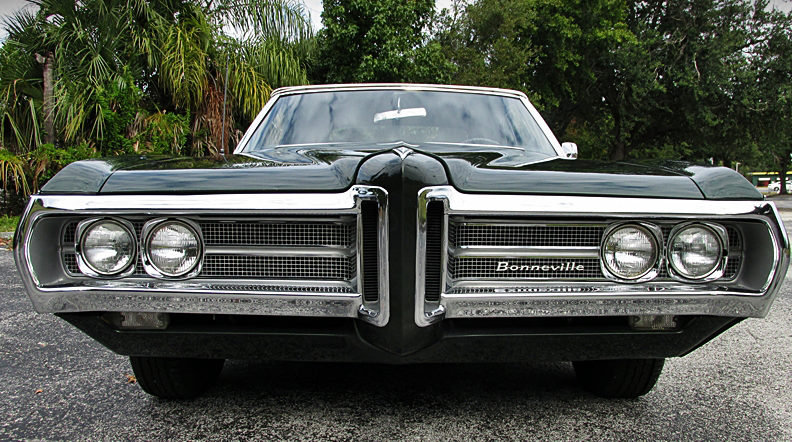
The Pontiac Bonneville could be ordered with a more formal roofline, like the one found on the Grand Prix, but with the more traditional lines of the LeMans. The result is an upscale car without the polarizing nose of the Grand Prix. (That look would come to the Bonneville the following year.) I also love the rear view of the Bonneville, with taillights that almost drape over the rear of the car, as they would a year later with the Thunderbird.
Pretty much everything I mentioned about the Wildcat applies to the Bonneville, as it also rides on GM’s B-body chassis. The difference is that the Bonneville got Pontiac’s potent 390-hp 428-cubic-inch V-8. What’s not to love about this pavement-pounding full-size?
1970 Mercury Marauder
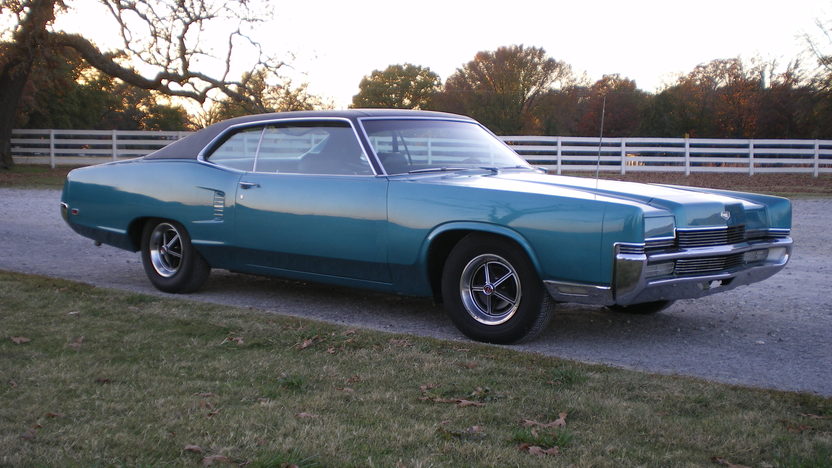
Mercury’s take on the personal luxury coupe for 1970 seemed a bit more forward-thinking than its Ford Thunderbird counterpart. Its squared-off leading edge was more formal and anticipated the look of future American cars, yet it boasted a sporty fastback roofline. The overall package is a perfect amalgam of luxury and sportiness. Bonus points for hidden headlights.
Under the hood was Ford’s familiar 429, again in 360-hp trim. That’s modest power by today’s metrics, but even full-size cars of that era weren’t terribly heavy. Bump the displacement to 460 cubes or more, add a roller cam, massage the cylinder heads a bit, and you’d have all the makings of a sleeper.
1972 Plymouth Gran Fury

Mopar’s C-bodies adopted “fuselage styling” in 1969. Dozens of unique Plymouth, Dodge, and Chrysler coupes, sedans, and wagons adopted this look, with varying success. Overall, the 1969–73 C-bodies have aged nicely. The Chrysler 300, particularly the 1970 Hurst variant, is a standout. Unfortunately, its 375-hp 440 big-block comes with a premium. They’re rare and pricey.
In contrast, the 1972 Plymouth Gran Fury is a relative bargain. Its massive, full-width chrome bumper was divided into two openings. It looks like it could eat a 1970 Coronet and spit out its slant six in disgust. Not subtle or understated—exactly why the Gran Fury rules.
1968 AMC Ambassador
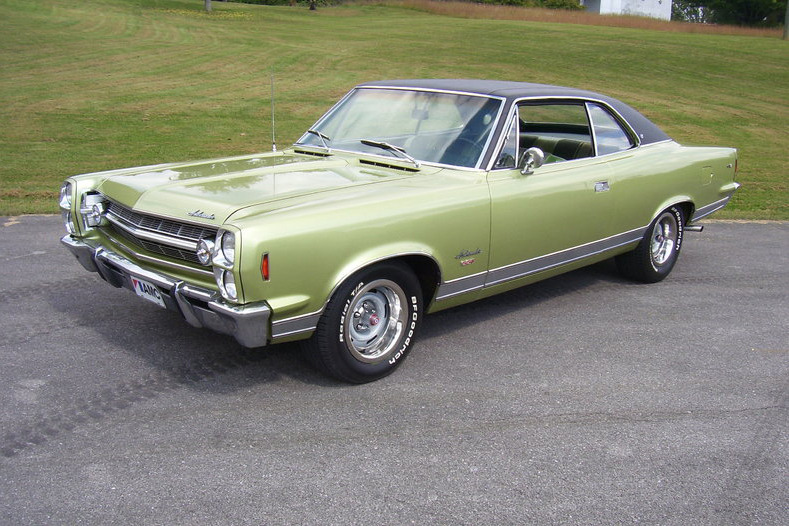
Last but not least, we have the AMC Ambassador. Perhaps the most overlooked full-size on this list, the Ambassador has gorgeous lines and offers up a 390-cubic-inch V-8 engine. I just love the bulges in the fenders and quarter panels that match the bumpers, and the stacked taillights that almost mirror the headlights. The next-generation Ambassador, with its beautiful roofline, deserves an honorable mention, as well. It, too, had 390 power initially, giving way for the 401.
You won’t have trouble rebuilding or hot-rodding an AMC V-8 to keep up with any of the other V-8s on this list, but an Ambassador might prove trickier to restore. It still sounds like a worthwhile endeavor, especially for an AMC loyalist.
***
Check out the Hagerty Media homepage so you don’t miss a single story, or better yet, bookmark it. To get our best stories delivered right to your inbox, subscribe to our newsletters.
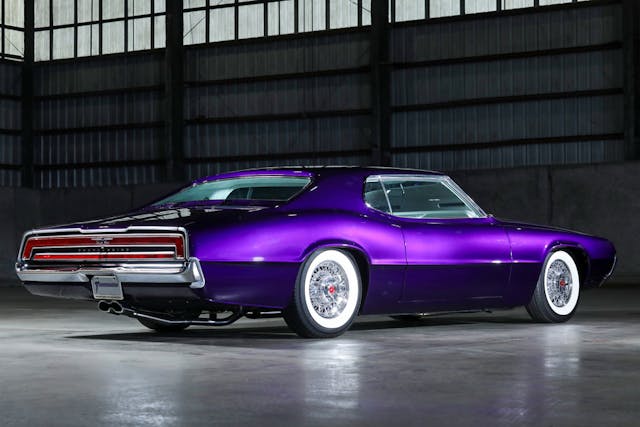


Great article, but I wish you’d include more prices.
My aunt paid around 5K for her 1969 Buick Wildcat.
I got a 2-door ht Galaxie 500 for 5k a few years back and have spent about the same to get it running well and looking good. The thing is it will probably always be a 10 to 12k car. But I swear, I have more thumbs up and comments when I drive this car than any of my more well known and expensive cars!
You can easily get an other couple in it to go cruising, not so in my Mustang.
Craig
Love those cars
Just about any Riviera but especially a 71 or 72 455 Riviera GS. Also a 69 or 70 Grand Prix 400 HO, 428 or 455 with 4 speed
The title of the article is Six full size alternatives to muscle cars. It doesn’t say these are the only alternatives. In the 60s and seventies you could just about put together any combination of body style and muscle that your little heart desired. It was agreat time to be alive for car guys. Plus—they didn’t all look alike.
nice to see AMC in the mix. They did make good cars and trucks. Also the Jeeps were deadly.
No they weren’t.
Careless and inexperienced drivers were deadly behind the wheel of them.
Inanimate objects can’t be deadly. They can be dangerous to operate, but they require an operator. Otherwise they just sit there. Doing NOTHING.
I agree it is nice to finally see AMC in the mix and Hagerty featuring something other than the so called big 3. This Ambassador would have given the “muscle cars” of the time a run for their money. In my opinion AMC was ahead of the pack with the 1st gen AMX and Javelins, the 2nd gen Javelins, of which I have had 2 over the years, the 360 Hornet that would blow the doors off most, the SC Rambler, Matadors, even the little beastie Gremlin. I would like to see Hagerty do a full article on AMC, history, etc. As you can guess I am a fan.
Good article but a tad to brief !!
Always had a soft spot for the bigger Pontiacs! The motor was a gem as well! A 421 Gran Prix would work!
Hi, where are these older models all located.
At todays fuel prices and getting 7-9 mpg they are not something you could afford to take on a 300 mile trip That works out to about 33 Gallons and $117 for a tank full of gas.
First off, that’s a myth and a lie. Those mileage numbers are only plausible from poorly tuned and aggressively driven vehicles. 69-70 still had higher compression and greater efficiency. Low compression 73-74 GM B-bodies with 455s could get mid teens in good working order. I’ve owned enough to know this.
My Holley carved, 11:1 compression, cammed muscle car with 3.90 gears would get 10 mpg, and I was ALWAYS romping on it.
For some of us more seriously infected by the CarOwner Virus, that is but a meagre price to pay! AND . . . our last shirt will have no pockets.
Come on, not one Chevy Impala? The 427 or 396 equipped SS models or even Biscaynes would be a great choice.
Great article. So many that are more interesting than the more common cars. Are they more personal luxury with muscle car essence? The best of both worlds. 72 Lincoln MK1V. One year only with the sportier bumpers. 72-3 Riviera with a Corvette like rear. Even better when some had rare sunroofs.
Loved those Mark’s. I was always a ford guy.
Can’t Please all the people all the time. That’s one of the pitfalls of writing a”best of article.”
In the fall of ‘68, I was a junior in high school and my parents bought a brand new 1969 Ford LTD hardtop. Gorgeous car, and only $4400 out the door. They let me pick out the color, and I chose Candy Apple Red. The black vinyl roof and interior really set it off. Dad drove me and my date to the prom in it. It’s interesting to note that these cars were in reach of the average working man back then. Dad traded it on a turquoise Lincoln Mark III a few years later. Both were great cars!
Love those Wildcats, especially the 1964, and the 1969-1970. Mom always wanted one, but Dad said it would not fit in the garage. Turns out, when I measured years later, it would have – by about one inch!